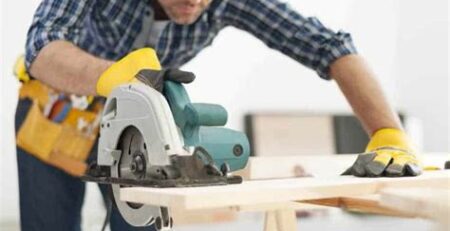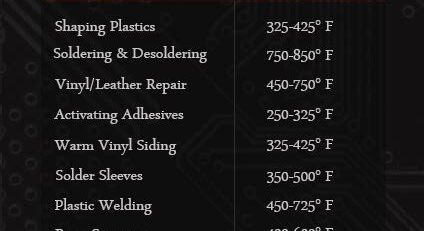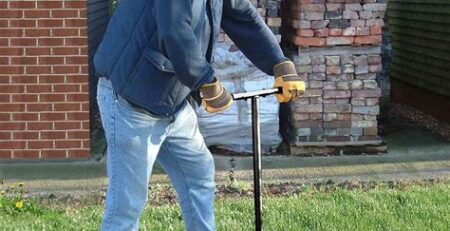How to Use a Plate Compactor Effectively
Have you ever struggled with achieving effective compaction when using a plate compactor? If so, you’re not alone. Many people find it challenging to use this powerful tool effectively, whether it’s for a DIY project or a professional job. In this blog post, we’ll delve into the ins and outs of using a plate compactor effectively. From understanding the plate compactor and preparing the ground for compaction to proper operation techniques and maintenance and care tips, we’ve got you covered. By the end of this post, you’ll have a solid understanding of how to make the most out of your plate compactor and achieve the best results every time. So, whether you’re new to using a plate compactor or looking to improve your current techniques, keep reading for valuable insights and tips. Let’s dive in and learn how to use a plate compactor effectively!
Understanding the Plate Compactor
The plate compactor is a versatile machine used in construction and landscaping to compact soil, gravel, and other materials. It is an essential tool for creating a solid and stable foundation for various construction projects. Understanding the plate compactor involves knowing its components, operation, and maintenance.
First and foremost, the plate compactor consists of a heavy steel plate at the bottom, a vibrating mechanism, and a handle for maneuvering. The vibrating mechanism generates powerful vibrations that help in compacting the ground, while the handle allows the operator to steer and control the machine effectively.
When it comes to operation, it is crucial to understand the proper use of the plate compactor. This includes knowing the correct technique for maneuvering the machine, the appropriate speed and pressure to apply during compaction, and the necessary safety precautions to follow while operating the equipment.
Lastly, maintenance of the plate compactor is vital for ensuring its longevity and performance. This involves regular cleaning, lubrication of moving parts, and inspection of components for any signs of wear and tear. By understanding the plate compactor and following proper maintenance practices, users can maximize the efficiency and lifespan of this indispensable construction tool.
Preparing the Ground for Compaction
Before using a plate compactor to achieve effective compaction, it is important to properly prepare the ground. One of the key steps in this process is removing any debris and loose materials from the surface. This can include rocks, branches, and other items that may interfere with the compaction process. Additionally, the ground should be cleared of any vegetation, such as weeds or roots, that could impede the compactor’s ability to create a solid, stable surface.
Once the surface has been cleared, it is important to assess the moisture content of the soil. In order to achieve optimal compaction, the soil should have a specific moisture level. If the soil is too dry, it may not compact properly, while soil that is too wet can lead to uneven compaction and potentially result in a weaker surface. By testing the moisture content of the soil, adjustments can be made, such as adding water or allowing the soil to dry, in order to achieve the ideal compaction conditions.
After addressing any moisture issues, the next step in preparing the ground for compaction is to ensure that the surface is properly graded. This involves shaping the soil to achieve a level, uniform surface that will provide a solid base for the compactor. Proper grading is essential for achieving effective compaction and creating a stable foundation for whatever project is being undertaken.
Finally, it is important to consider any necessary reinforcement or stabilization measures for the soil. This can include adding materials such as gravel, sand, or geotextiles to enhance the soil’s strength and stability, as well as reduce the risk of settling or erosion. By taking these steps to prepare the ground for compaction, it is possible to ensure that the resulting surface will be durable, resilient, and capable of withstanding the demands of its intended use.
Proper Plate Compactor Operation
When it comes to using a plate compactor, it’s important to understand the proper operation to achieve effective results. One of the first steps in proper plate compactor operation is to ensure that the machine is on a level surface before starting. This will help maintain stability and prevent any potential accidents during operation.
Another crucial aspect of proper plate compactor operation is to make sure that the area to be compacted is free of any debris or obstacles. Clearing the ground of rocks, roots, and any other objects will not only ensure a smooth compaction process but also prevent any damage to the machine.
Furthermore, when operating a plate compactor, it’s essential to handle the machine with care and to follow the manufacturer’s guidelines for usage. This includes using the correct operating speed, keeping a firm grip on the handles, and wearing the necessary protective gear such as gloves and eyewear.
Lastly, proper plate compactor operation also involves knowing when and how to apply the right amount of pressure during compaction. It’s important to understand the type of soil being compacted and to adjust the machine’s settings accordingly to achieve optimal results.
Tips for Achieving Effective Compaction
When using a plate compactor for achieving effective compaction, it’s important to start by properly preparing the ground. This involves removing any debris, rocks, or other materials that could hinder the compaction process. Clearing the ground of these obstacles will ensure that the compactor can do its job effectively.
Another important tip for achieving effective compaction is to make sure that the compactor is operated correctly. This means that the operator should follow the manufacturer’s instructions for the specific model being used. Proper operation will ensure that the compactor is able to achieve the desired level of compaction.
It’s also crucial to pay attention to the speed and frequency of the compactor’s movements. Compacting too quickly or too slowly can result in uneven compaction, which can undermine the stability and durability of the compacted surface. By maintaining a consistent speed and frequency, effective compaction can be achieved.
Lastly, regular maintenance and care of the plate compactor is essential for achieving effective compaction. This includes checking and replacing worn or damaged parts, keeping the compactor clean, and storing it in a dry and safe location when not in use. Proper maintenance will ensure that the compactor is able to perform at its best and achieve effective compaction.
Maintenance and Care of Plate Compactor
Proper maintenance and care of your plate compactor are crucial in ensuring its longevity and performance. Regular maintenance can help prevent costly repairs and downtime, ultimately saving you time and money in the long run.
One important aspect of maintenance is keeping the plate compactor clean. After each use, it is essential to remove any dirt, debris, or concrete buildup from the machine. This can be done using a brush or compressed air to ensure that the engine and moving parts are free from obstruction.
Inspecting the compactor before and after each use is also vital. Check for any loose bolts, worn-out parts, or leaks. Any issues should be addressed promptly to avoid further damage or safety hazards.
Regular oil changes and filter replacements are necessary to keep the engine running smoothly. Consult the manufacturer’s guidelines for the recommended interval for these maintenance tasks.
Frequently Asked Questions
What is a plate compactor?
A plate compactor is a construction equipment used to compress and compact soil, gravel, and asphalt. It is commonly used for preparing a stable base for paving or landscaping projects.
How do you prepare the ground for compaction using a plate compactor?
Before using a plate compactor, it is important to clear the area of any debris and loose material. The ground should be properly graded and moistened to achieve effective compaction.
What are the key steps for proper plate compactor operation?
Proper plate compactor operation involves positioning the equipment at the edge of the area to be compacted, starting the compactor, and moving it over the surface in overlapping passes.
What are some tips for achieving effective compaction with a plate compactor?
To achieve effective compaction, it is important to make multiple passes over the area, vary the direction of compaction, and avoid over-compaction which can cause damage to the surface.
How should a plate compactor be maintained and cared for?
Plate compactors should be regularly inspected for any damage or wear, cleaned after each use, and have their engine and components properly maintained according to the manufacturer’s guidelines.













Leave a Reply